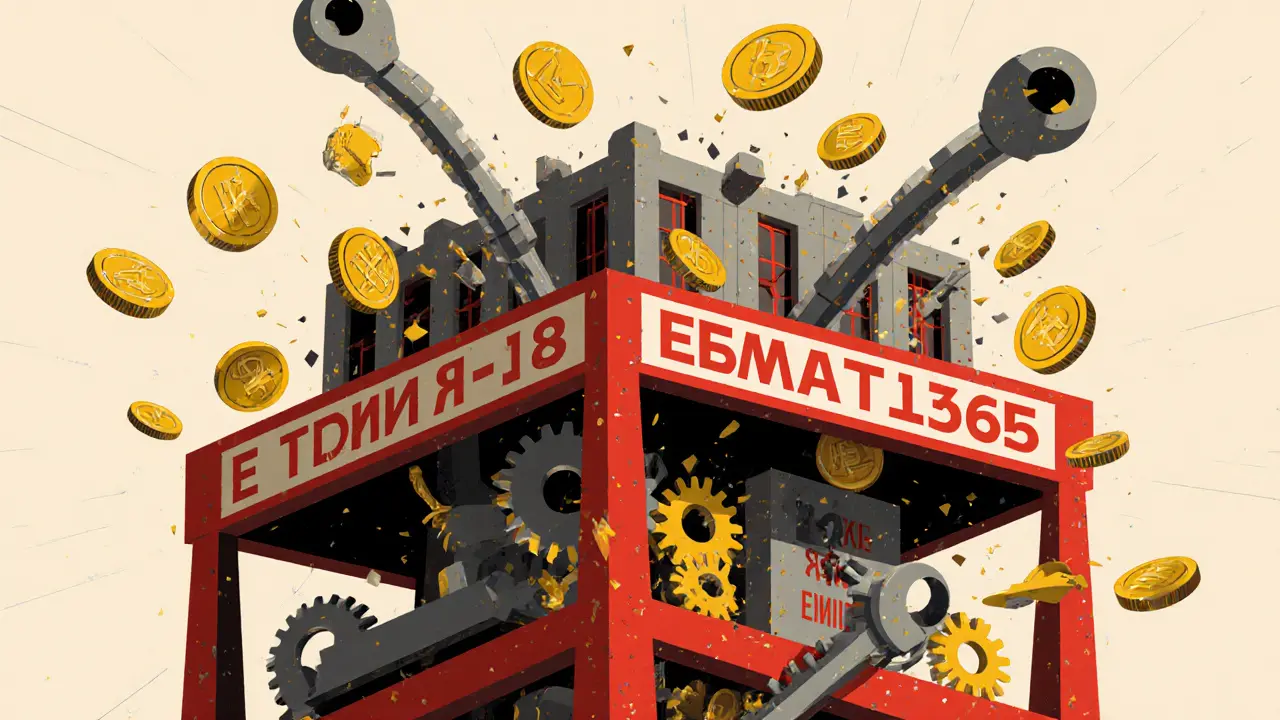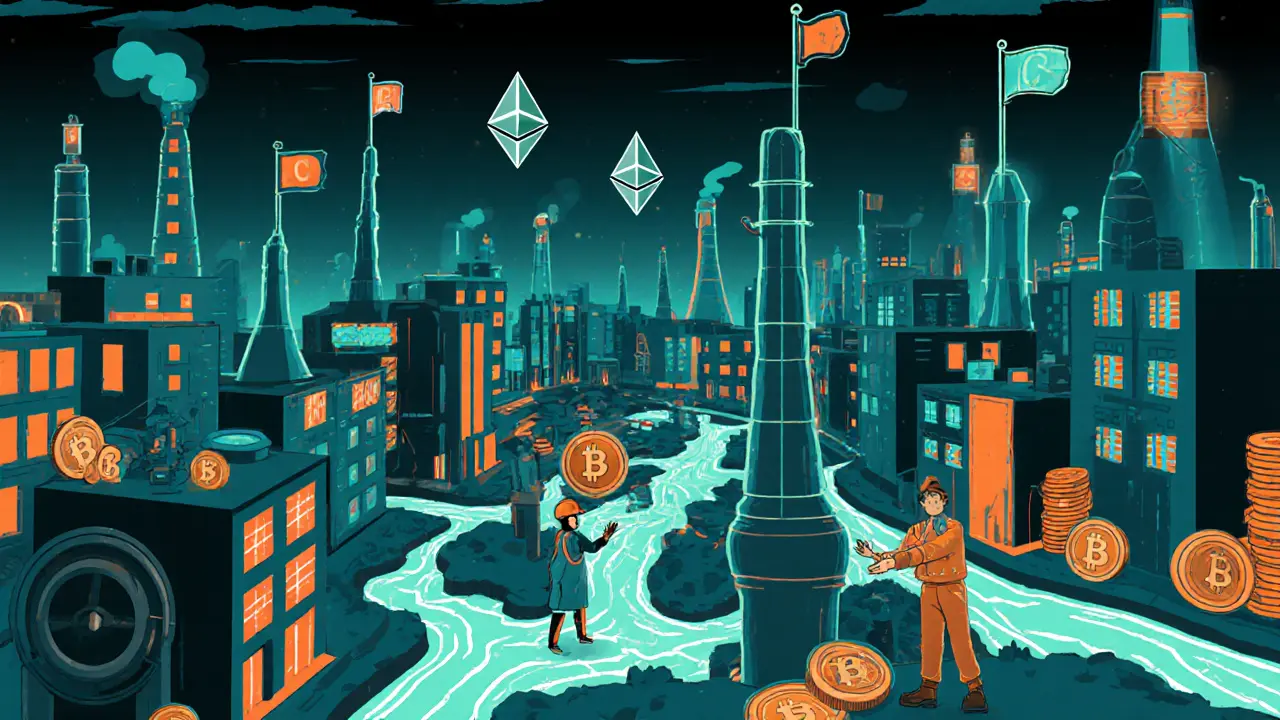ERC-1155 Multi-Token Standard Explained: How One Contract Manages NFTs, Fungible Tokens, and More
 Jul, 8 2025
Jul, 8 2025
ERC-1155 Gas Savings Calculator
Gas Cost Comparison Calculator
What is ERC-1155?
Before ERC-1155, if you wanted to build a game with digital items, you needed three separate contracts: one for gold coins (fungible tokens like ERC-20), one for rare swords (NFTs like ERC-721), and another for limited-edition skins that could be traded but weren’t unique. Each contract cost money to deploy and every time a player traded an item, you paid gas fees for each transfer. It was messy, expensive, and slow.
ERC-1155 changed all that. It’s a single smart contract standard on Ethereum that lets you manage any combination of tokens in one place: fungible tokens, non-fungible tokens (NFTs), and semi-fungible tokens - all under the same code. Think of it like a digital warehouse that can store apples,独一无二的古董花瓶, and limited-run sneakers - all in one room, not three separate storage units.
How ERC-1155 Works: One Contract, Many Token Types
At its core, ERC-1155 uses a simple but powerful structure: each token type is identified by a unique number - a uint256 token ID. That’s it. No separate contracts. No confusing rules. Just one mapping: address → token ID → balance.
- If 100 players own the same bronze sword (token ID #501), they all share the same ID. That’s fungible - like coins.
- If one player owns the only legendary dragon axe (token ID #999), that’s non-fungible - like a unique NFT.
- If 500 silver swords exist but only one person can own each, and they can’t be traded until level 50 - that’s semi-fungible. Same ID, but rules change based on context.
This flexibility is why ERC-1155 is called “fungibility-agnostic.” It doesn’t force you to pick one type. You decide what each token ID represents.
Batch Transfers: The Real Game-Changer
The biggest win with ERC-1155 isn’t just mixing token types - it’s how cheaply you can move them.
With ERC-20 or ERC-721, sending 10 different items to a friend means 10 separate transactions. Each one costs around 45,000-60,000 gas. That’s 450,000+ gas total.
With ERC-1155, you send all 10 in one batch. One transaction. Around 115,000 gas. That’s 75% less than doing it the old way. For games where players trade weapons, skins, and currency daily, this isn’t just a convenience - it’s survival.
Enjin used this to power their Minecraft plugin. Over 1.2 million in-game item transfers happened with 92% lower gas costs than using separate ERC-20 and ERC-721 contracts. Players didn’t notice the difference - they just got their loot faster and cheaper.
How ERC-1155 Compares to ERC-20 and ERC-721
| Feature | ERC-20 | ERC-721 | ERC-1155 |
|---|---|---|---|
| Token Type | Fungible only | Non-fungible only | Fungible, NFT, semi-fungible |
| Contract Count | One per token | One per NFT collection | One contract for all tokens |
| Batch Transfers | No | No | Yes - up to 100+ tokens in one tx |
| Gas Cost for 10 Transfers | ~450,000+ gas | ~450,000+ gas | ~115,000 gas |
| Metadata per Token | Per contract | Per token | Per token ID - more flexible |
| Best For | Currencies, rewards | Art, collectibles | Gaming, metaverse, mixed economies |
Why Gamers and Metaverse Projects Love ERC-1155
Blockchain gaming is where ERC-1155 truly shines. Why? Because games need everything: currency, weapons, skins, quest items, and rare collectibles - all interacting together.
In a game like Decentraland or The Sandbox, you might:
- Buy land (NFT)
- Trade in-game currency (fungible)
- Upgrade your armor from common to rare (semi-fungible - same item, but only 100 exist)
- Send all three to a friend in one click
That’s impossible with ERC-20 or ERC-721 alone. You’d need three contracts, three separate transfers, and three times the gas. ERC-1155 makes it seamless.
By Q2 2023, 73% of new blockchain gaming projects used ERC-1155 as their primary standard, up from just 41% in 2021. DappRadar found it accounted for 38% of all NFT activity - second only to ERC-721, but growing fast.
Drawbacks and Challenges
ERC-1155 isn’t magic. It’s powerful, but it’s complex.
First, the learning curve. If you’re new to smart contracts, understanding how to set up token IDs, handle batch transfers, and implement the onERC1155Received hook takes time. Developers familiar with ERC-20 and ERC-721 still report needing 15-25 extra hours to get comfortable.
Second, metadata. While ERC-1155 lets you attach custom data to each token ID, not all marketplaces handle it the same way. One developer on GitHub said they had to build custom integrations for 3 out of 5 major NFT platforms just to display items correctly.
Third, security. Early implementations had serious flaws. In 2021, a gaming platform lost $250,000 because of a bug in how token IDs were validated. OpenZeppelin’s audit found 68% of ERC-1155 contracts had at least one moderate-severity issue - mostly around access control or input validation. That’s higher than ERC-721’s 52%.
Bottom line: if you only need one type of token, stick with ERC-20 or ERC-721. They’re simpler, safer, and better supported for single-purpose use cases.

How to Get Started With ERC-1155
If you’re a developer ready to try it:
- Start with OpenZeppelin’s ERC1155 implementation. It’s used in 89% of live deployments and comes with built-in safety checks.
- Define your token IDs logically. Use ranges: 1-1000 for currency, 1001-2000 for weapons, 2001+ for NFTs.
- Set metadata URIs per token ID - not per contract. This lets you update item descriptions or images without redeploying.
- Use batch transfers for all player actions: inventory updates, trading, loot drops.
- Test the
onERC1155Receivedhook thoroughly. This function tells your contract how to react when tokens are received - a common source of exploits.
Community resources are strong: the ERC-1155 subreddit has 14,500 members, and OpenZeppelin’s docs include 27 code examples and 15 best practices. Stack Overflow answers average under 19 hours - fast for blockchain topics.
The Future of ERC-1155
ERC-1155 isn’t slowing down. OpenZeppelin released version 4.8.0 in May 2023 with gas optimizations that cut transfer costs even further. The Ethereum Foundation is planning tighter integration with ERC-4337 (account abstraction), which could reduce gas fees for token transfers by another 30-40%.
Gartner predicts that by 2025, ERC-1155 will power 55% of all blockchain gaming asset transfers. Enterprise adoption is rising too: 43 Fortune 500 companies are testing it for loyalty programs and supply chain tracking.
It’s also spreading beyond Ethereum. NEAR Protocol and Binance Smart Chain now support native ERC-1155-like standards. Even proposals like EIP-6059 are being discussed to improve metadata handling - showing the community is still actively improving it.
Final Thoughts
ERC-1155 isn’t the right choice for every project. But if you’re building something that needs more than one kind of digital asset - especially in gaming, virtual worlds, or complex economies - it’s the most efficient tool available.
It cuts costs, simplifies architecture, and unlocks new kinds of interactions between items. The trade-off? You need to understand it well. But for those who do, the payoff is massive: faster, cheaper, and more flexible digital economies than ever before.